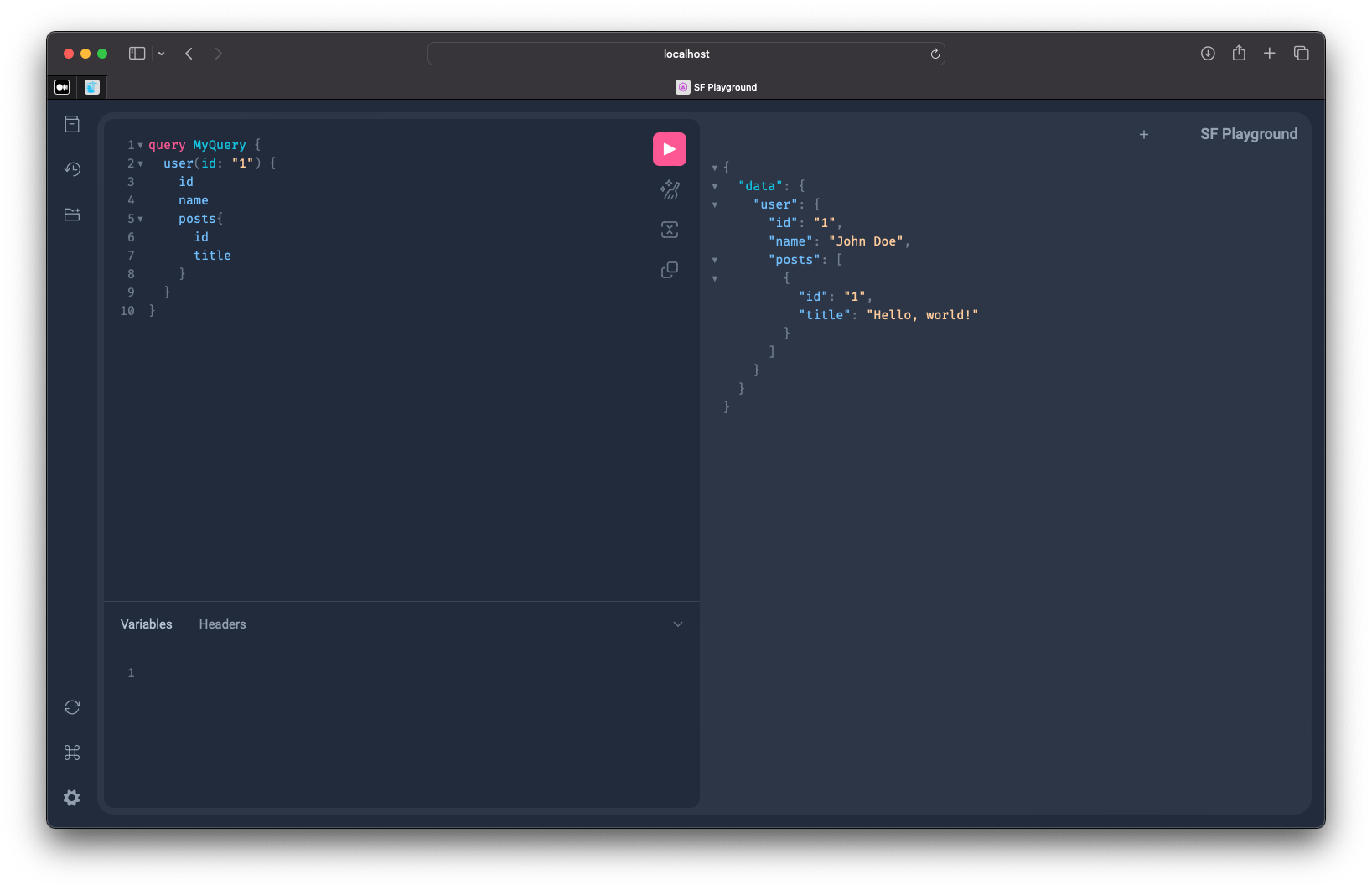Pylon
Building a GraphQL API with Pylon is simple and straightforward. Pylon is a backend framework that is built on top of Hono and provides code-first GraphQL API development.
The GraphQL schema is generated in real-time from your TypeScript definitions, allowing you to focus solely on writing your service logic. This approach significantly improves development speed, enhances type safety, and reduces errors.
Any breaking changes in your code are instantly reflected in your API, enabling you to immediately see how changes impact its functionality.
Check out the Pylon for more information.
Setup new Pylon service
Pylon allows you to create a new service using the npm create pylon command. This command creates a new Pylon project with a basic project structure and configuration. During the setup process, you can choose your preferred runtime, such as Bun, Node.js, or Cloudflare Workers.
This guide uses the Bun runtime.
Creating a new project
To create a new Pylon project, run the following command:
npm create pylon my-pylon@latestThis will create a new directory called my-pylon with a basic Pylon project structure.
Project structure
Pylon projects are structured as follows:
my-pylon/
├── .pylon/
├── src/
│ ├── index.ts
├── package.json
├── tsconfig.json.pylon/: Contains the production build of your project.src/: Contains the source code of your project.src/index.ts: The entry point of your Pylon service.package.json: The npm package configuration file.tsconfig.json: The TypeScript configuration file.
Basic example
Here's an example of a basic Pylon service:
import { app } from '@getcronit/pylon'
export const graphql = {
Query: {
sum: (a: number, b: number) => a + b,
},
Mutation: {
divide: (a: number, b: number) => a / b,
},
}
export default appSecure the API
Pylon integrates with ZITADEL, a cloud-native identity and access management solution, to provide secure authentication and authorization for your APIs. You can easily secure your Pylon API by following the steps outlined in the ZITADEL documentation.
Create a more complex API
Pylon allows you to create more complex APIs by leveraging its real-time schema generation capabilities. For more information about supported TypeScript types and how to define your API, refer to the Pylon documentation
This example demonstrates how to define complex types and services in Pylon. By leveraging TypeScript classes and methods, you can create powerful APIs that interact with databases, external services, and other resources.
import { app } from '@getcronit/pylon'
class Post {
id: string
title: string
constructor(id: string, title: string) {
this.id = id
this.title = title
}
}
class User {
id: string
name: string
constructor(id: string, name: string) {
this.id = id
this.name = name
}
static async getById(id: string): Promise<User> {
// Fetch user data from the database
return new User(id, 'John Doe')
}
async posts(): Promise<Post[]> {
// Fetch posts for this user from the database
return [new Post('1', 'Hello, world!')]
}
async $createPost(title: string, content: string): Promise<Post> {
// Create a new post for this user in the database
return new Post('2', title)
}
}
export const graphql = {
Query: {
user: User.getById,
},
Mutation: {
createPost: (userId: string, title: string, content: string) => {
const user = User.getById(userId)
return user.$createPost(title, content)
},
},
}
export default appCall the API
The Pylon API can be called using any GraphQL client library. For development purposes, it is recommended to use the Pylon Playground, which is a web-based GraphQL IDE that allows you to interact with your API in real-time.
- Start the Pylon server by running
bun run devin your project directory. - Open the Pylon Playground in your browser by navigating to
http://localhost:3000/graphql. - Write your GraphQL query or mutation in the left panel.

Get access to the Hono context
You can access the Hono context anywhere in your code by using the getContext function. This function returns the current context object, which contains information about the request, response, and other context-specific data.
import { app, getContext } from '@getcronit/pylon'
export const graphql = {
Query: {
hello: () => {
const context = getContext()
return `Hello, ${context.req.headers.get('user-agent')}`
},
},
}
export default appFor more information about the Hono context object and its properties, refer to the Hono documentation and Pylon documentation.
Where does Hono fit in?
Pylon is built on top of Hono, a lightweight web framework for building web applications and APIs. Hono provides the core functionality for handling HTTP requests and responses, while Pylon extends this functionality to support GraphQL API development.
Besides GraphQL, Pylon also lets you access the underlying Hono app instance to add custom routes and middleware. This allows you to build more complex APIs and services that leverage the full power of Hono.
import { app } from '@getcronit/pylon'
export const graphql = {
Query: {
sum: (a: number, b: number) => a + b,
},
Mutation: {
divide: (a: number, b: number) => a / b,
},
}
// Add a custom route to the Pylon app
app.get('/hello', (ctx, next) => {
return new Response('Hello, world!')
})Conclusion
Pylon is a powerful web framework that simplifies the development of GraphQL APIs. By leveraging TypeScript type definitions, Pylon provides real-time schema generation, enhancing type safety and reducing errors. With Pylon, you can quickly build secure and scalable APIs that meet your business requirements. Pylons integration with Hono allows you to use all the features of Hono while focusing on GraphQL API development.
For more information about Pylon, check out the official documentation.
